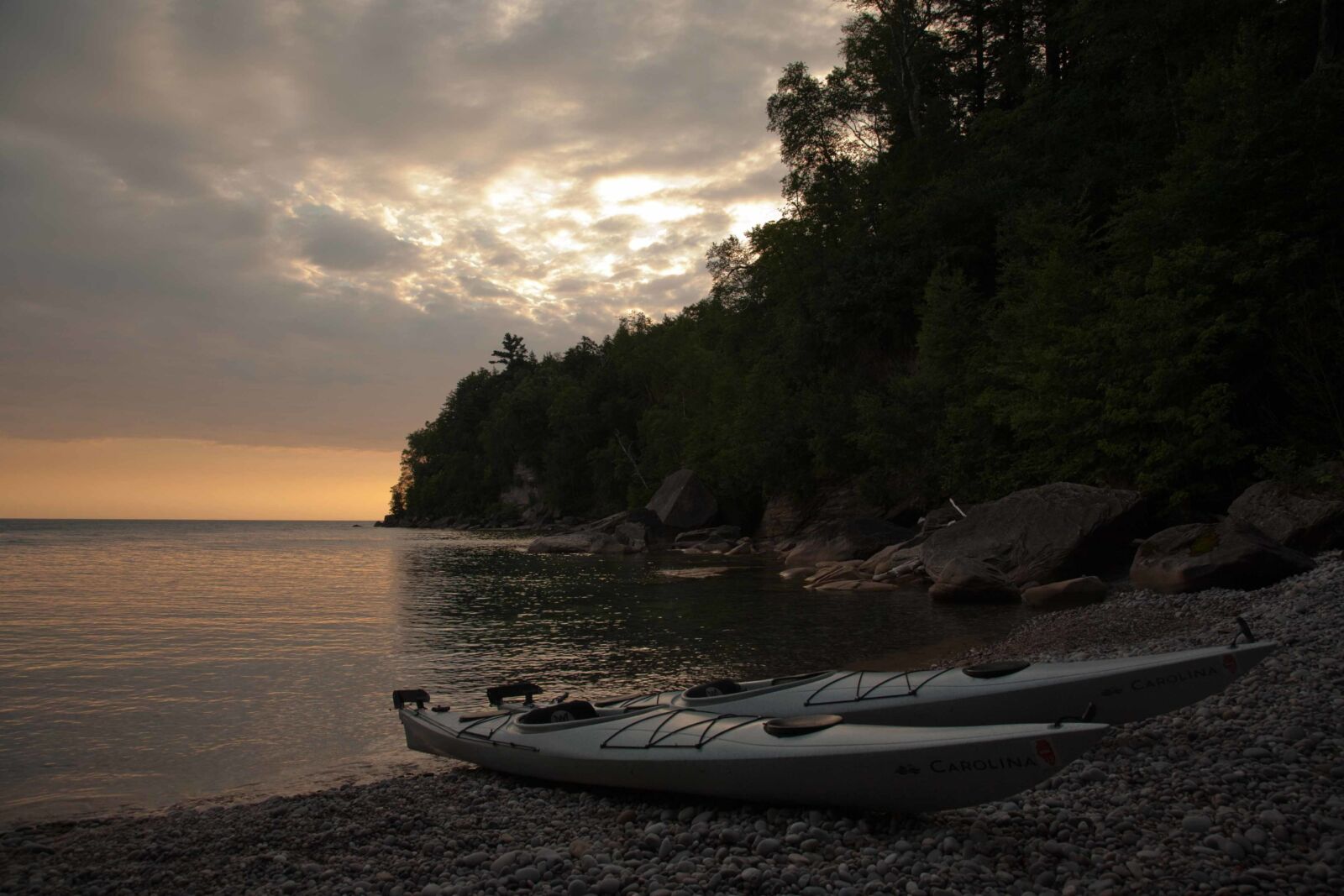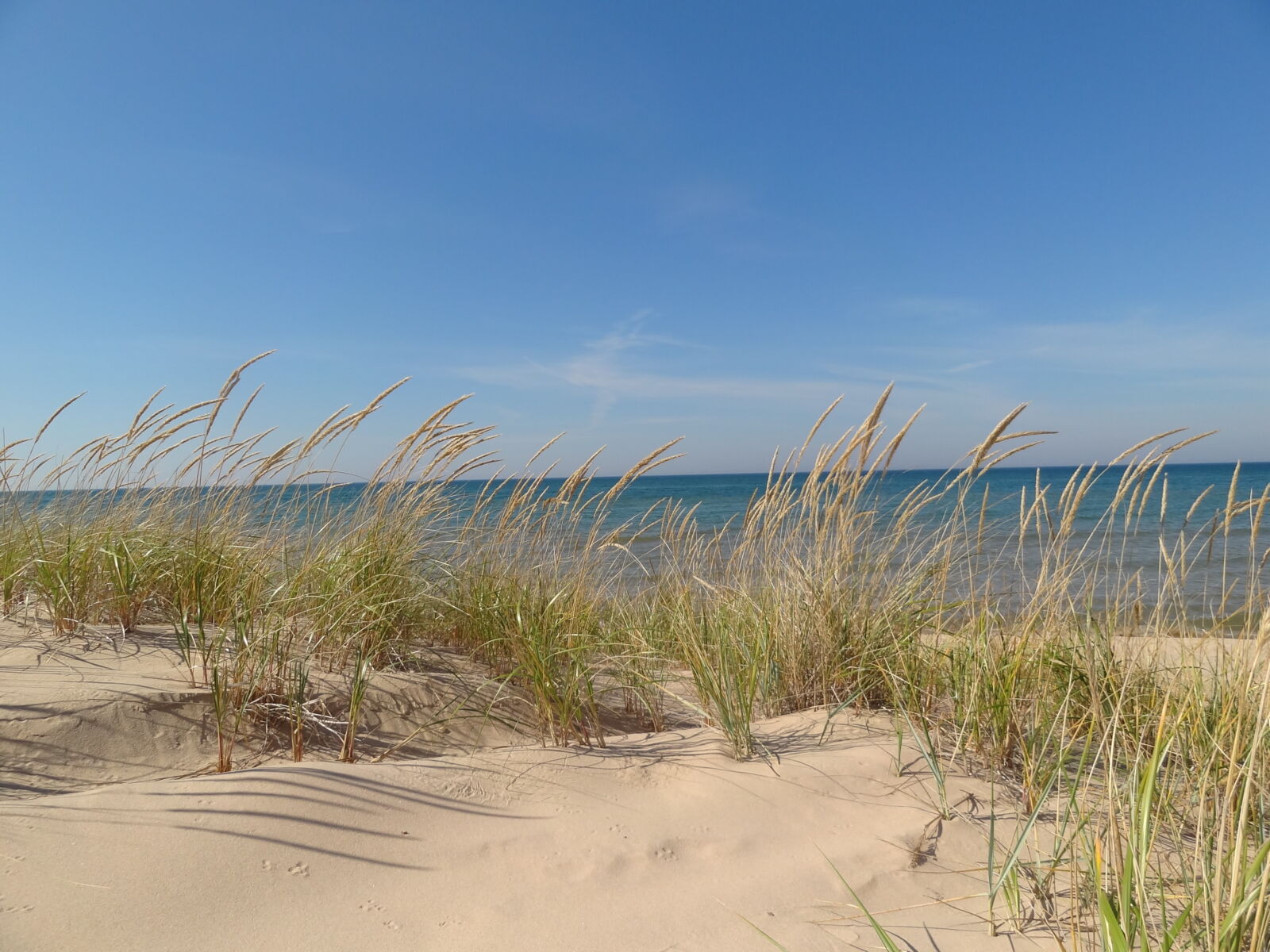The Great Lakes are one of the wonders of North America, and the National Forests that edge them offer some of the region’s best wildlife, scenery and recreation. The Ottawa, Huron-Manistee, Hiawatha and Superior National Forests showcase the region’s diverse landscapes and abundant activities. Each contains unique and beguiling features, from ancient sand dunes to sprawling jackpine forests, historic lighthouses to dramatic ice-age remnants.
These National Forests are, perhaps, most picturesque in the fall when their stands of deciduous trees are ablaze with reds and yellows. But fall colors aren’t the only draw; these forests also provide a wealth of sights and outdoor recreation year round. Skiing, snowmobiling and snowshoeing are popular in the winter, while hiking, camping and boating top the list of summer activities.
While the Great Lakes themselves are obvious highlights, thousands of other lakes and miles of streams provide world-renowned opportunities for canoeing and fishing throughout the four forests. The region’s crown jewel, the Boundary Waters Canoe Area Wilderness within the Superior National Forest in Northern Minnesota, is one of the most visited Wilderness Areas in the country.
All four forests are joined by the North Country National Scenic Trail (NCT). The NCT is the nation’s longest National Scenic Trail, winding 4,600 miles through six states bordering the Great Lakes before crossing Minnesota and ending in North Dakota. The trail’s various segments make for popular section hikes for residents who don’t have the time to tackle the entire length.
Each of the forests offers its own highlights and draws visitors from around the country looking to find their own glimpse of what makes this region so great.
Hiawatha National Forest
The 894,000-acre Hiawatha National Forest, also known as the “Great Lakes National Forest,” bridges Michigan’s famed Upper Peninsula. The Hiawatha includes one hundred miles of shoreline and is the only National Forest to border three Great Lakes: Superior, Michigan and Huron.
The Point Iroquois Lighthouse stands high above the waters of Lake Superior in the Hiawatha National Forest at the entry to St. Mary’s River, the only water connection between Lake Superior and the other Great Lakes. It served passing sailors by marking the narrow channel between the shallow sand beaches and shoals of Point Iroquois and the rocky reefs of Gros Cap on the Canadian side of Whitefish Bay. Today, it houses a museum.

Photo by Monika Soltysik
The west side of the Hiawatha National Forest saw heavy timber harvest in the area’s logging heyday, and was subsequently replanted by the Civilian Conservation Corps. Now it’s home to a variety of wildlife species, including moose, grey wolves, black bear, coyotes, bobcats, beavers, river otters, Canada lynx, golden eagles, sandhill cranes and wild turkeys.
The Forest lies on the leeward side of Lakes Superior and Michigan and receives nearly 200 inches of snow annually from the powerful “lake effect.” A true winter wonderland, the
Forest’s cross-country ski trail system offers nearly 90 miles of world-class skate and classic ski trails. Hundreds of snowmobiling trails connect with an impressive statewide system. If skiing or snowmobiling aren’t your bag, snowshoeing, ice fishing and dog sledding are great backcountry winter options. And for those more drawn to a crackling wood stove, two log cabins are available for rent.
Ottawa National Forest
The Ottawa National Forest is famed for its waterfalls. Given that the forest climbs from 600 feet of elevation on the Lake Superior shoreline to more than 1,800 feet in the Sylvania Wilderness, it’s no surprise that there are dozens of cascades to seek out. Copper Creek and its parent, the Presque Isle River, include eleven waterfalls, seven of which occur within the Ottawa. Likewise the Wild and Scenic Black River forms a series of seven waterfalls as it runs from Copper Peak towards Lake Superior. At more than 900,000 acres, the Ottawa offers nearly endless opportunities for waterfall enthusiasts to discover a hidden cascade deep in the thick woods.
The Ottawa is generally a boreal forest, clad in pines, spruces and other coniferous trees well adapted to the snowy winters. It’s also a landscape that shows the wear of extensive glaciation over several Ice Ages. The most dramatic changes are found near Lake Superior where exposed bedrock and steep bluffs provide homes for cliff-nesting Peregrine Falcons.
Huron-Manistee National Forests
The Huron and Manistee National Forests, though not contiguous, are managed as a single entity. The Huron, which covers more than 430,000 acres, lies on the western shores of Lake Huron. Characterized by sandy soils and a jackpine-dominated environment the Forest has evolved to be dependent upon seasonal forest fires. The Kirtland’s warbler, which nests in this distinct habitat, is one of the many species that call the Forest home.
The 540,000-acre Manistee, on the western side of lower Michigan, has extensive shoreline on Lake Michigan. In addition to being popular for fishing, camping, hunting, fishing, cross-country skiing and snowmobiling, the Manistee is a destination for ultra-endurance mountain bikers competing in the Lumberjack 100, an annual 100-mile mountain bike race.

The Nordhouse Dunes Wilderness, on the east shore of Lake Michigan, is one of the few Wilderness Areas in the U.S. with an extensive lakeshore dunes ecosystem. Most of the dunes are 3,500 to 4,000 years old, and some stand hundreds of feet above the lake. The Nordhouse Dunes is unique because it includes forested areas with juniper, jack pine and hemlock, in addition to dune grass and interspersed marshes. The beach is wide and sandy, excellent for long walks and sunset viewing.
Superior National Forest
At nearly four million acres, the vast Superior National Forest is the size of the three other Great Lakes National Forests combined. It touches Lake Superior but its most well-known attraction, the Boundary Waters Canoe Area Wilderness, is nestled along the U.S.-Canada border.
The “Boundary Waters” covers the northern third of the Superior. Visitors to the Boundary Waters find solitude and primitive recreation opportunities. Established in 1978, the Wilderness has changed little since the glaciers melted. The area contains nearly half a million acres of old growth forest. Roughly 250,000 visitors explore this life-list destination per year, so permits are required and special regulations apply to all overnight camping. With over 1,500 miles of canoe routes, nearly 2,200 designated campsites, more than 1,000 lakes and streams, and historic portages once used by European explorers, fur traders, and Native American tribes, it is no surprise that the Boundary Waters is one of the most visited Wilderness Areas in the United States.
The Superior National Forest contains both true boreal forest and the “North Woods” mixed conifer-hardwood forest.
A profusion of lakes and streams (more than 445,000 acres or 695 square miles of the Forest are surface water) have long drawn visitors, and the Forest boasts a colorful cultural history. The Forest also includes the highest point in Minnesota, 2,300-foot Eagle Mountain.
In addition to seeing bald eagles, moose and other wildlife on the Superior, you’re likely to hear the wavering howl of a wolf. The region is home to the largest population of grey wolves in the lower 48 states, with an estimated 300-400 wolves residing within the boundaries of the Forest. With 155 different nesting species, the Superior has the greatest number of breeding birds of any National Forest. In short, the Superior is as wild a landscape you can find this side of Alaska.
While some may consider America’s Midwest as “flyover country,” the National Forests of the Great Lakes prove this region is well worth a visit. What these forests lack in snowcapped peaks and wide-open expanses, they more than make up for with year round recreation activities, abundant wildlife and shimmering lakes.

